
Background information
Nutrition expert: «Sometimes we actually have to eat more to lose weight»
by Siri Schubert

Sports and nutrition go together like spaghetti and meatballs. Of course, you can have one without the other. But it’s only really good when you combine the two. To make sure my training for the half marathon doesn’t melt away like cotton candy, I sought advice from a nutrition specialist.
«The craving for sweets will probably subside in two to three days,» says Gregory Grünig, a fitness trainer and nutrition diagnostician at Erpse Institut. «Fat chance!» I think to myself. I’ve had a sweet tooth (especially for gummy bears) since childhood.
With this radical announcement, the nutritionist has my full attention. As part of my preparation for the Lake Hallwil half marathon on 14 October, I want to get my nutrition checked. I’m sure my eating habits aren’t ideal. But I just can’t navigate the jungle of tips, no-gos and strategies from self-proclaimed experts. Some swear by low carb, others by high carb. Some preach intermittent fasting, others eating every two hours. I’m starting to get the feeling that I can get a lot wrong with my diet – and only a little right.
«The fact that there are so many nutrition tips on TikTok and Instagram from people who know nothing about the subject matter doesn’t make our job any easier,» Gregory says. There are only a few universal rules. An optimal diet is, apart from these few rules, always adapted to the specific circumstances of the individual. But there are some diet mistakes almost all athletes make – more on that in the interview below.
In order to provide an insight into my personal circumstances, I have to fill out an extensive questionnaire before the first appointment. It asks me about my eating habits and sleep, but also about qualities like curiosity and helpfulness, humour, time with friends, daily annoyances, moods, TV, caffeine and alcohol consumption and decisiveness. On many points, I wonder what this has to do with nutrition.
Later, I learn that this information helps to assess which needs and character traits make me susceptible or resistant to stress. Sports and nutrition don’t happen in a vacuum. They’re always integrated into your current life situation. That’s why what tests my energy and nerves, as well as what motivates me is important.
At the Erpse test centre, more analyses await me. First up is my body fat measurement – a test of confidence for me. Gregory pinches my abdomen, arms and legs with metal callipers to determine my body fat percentage and distribution. Conclusions can be drawn about your health and metabolism based on whether your body fat accumulates around your abdomen or extremities.
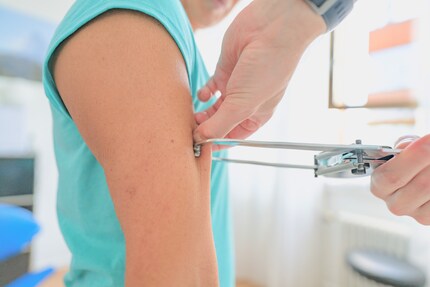
Next, the nutrition expert sticks electrodes on my hands and feet. Using Bioelectrical Impedance Analysis (BIA), he measures my body composition, that is, the proportion of muscle, fat, bone and water. Weight or body mass index (BMI) alone is often misleading, especially for athletes; muscle weighs more than fat, so you may have a high BMI but actually be in excellent shape. The analysis also allows important conclusions to be drawn about my state of recovery and the regenerative capacity of my cells.
The result: just about everything is in the green for me – I have a good ratio of muscle to fat. However, my water content is higher than ideal. This was already the case with my BIA results at the Aurum gym and indicates that my recovery is suboptimal. Inflammatory processes and a lack of regeneration cause water to deposit outside the cells. This increases my weight and makes my legs feel heavy. «If we can improve recovery and have your body retain less water, we should already be able to achieve a weight loss of about two kilogrammes,» Gregory says. Sounds good to me.
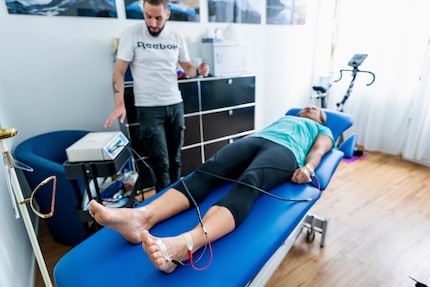
The next test on the programme: spiroergometry. This is used to test your lungs’ and cardiovascular system’s resilience. I have to pedal on a stationary bike to determine how much oxygen I take in under load and how much carbon dioxide I breathe out. In addition, it measures how many litres of air I inhale per minute (the so-called respiratory minute volume) and how often I breathe in and out per minute (respiratory rate). Gregory puts a mask over my face, and I get pedalling.
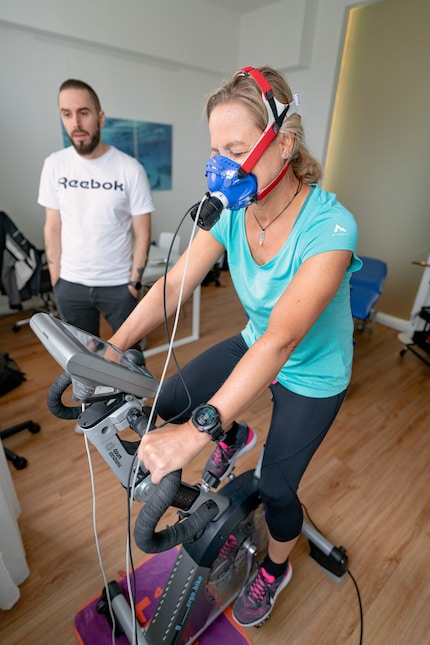
It’s nice and easy at first, but then the wattage increases and the going gets tougher. As I pedal, the monitor shows me my heart rate, the duration, load, and a bunch of other data I don’t understand right away. What’s clear is that this test is looking closely at how my physiology reacts to increasing load and different heart rate zones. Using an algorithm by Erpse Institut, Gregory also calculates my daily calorie needs at rest and under stress.
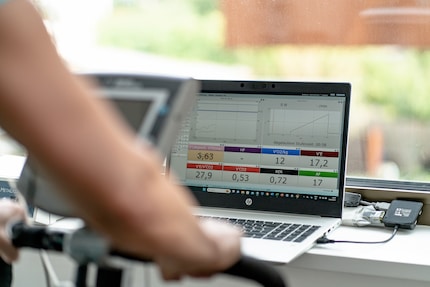
Lastly, Gregory pokes me in the ear to measure the lactate levels in my blood right after the test on the stationary bike and then again after three minutes. This allows conclusions to be drawn about the state of my metabolism and shows to what extent I was in the anaerobic zone and how much lactic acid was formed.
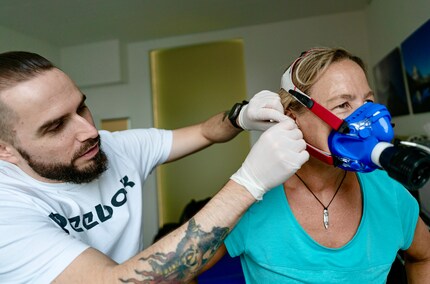
I eagerly await the results. It’s cool to get such precise insight into your own metabolism. And that’s not all: the data from the tests is combined with the results from the questionnaire to identify where things are going wrong and what I can improve on.
We start off with the mind-body interaction. Gregory’s analysis: «We especially see certain deficits when it comes to physical regeneration. Your head won’t perceive this quite the same way your body does. So, the key here is to focus more on your body and give it the rest it needs.» Can’t argue with that. I like to move a lot and am almost always in the mood for sports. Admittedly, I rarely give myself enough rest.
My physiological data is all good – except for my water retention and less than optimal recovery, which I’ve definitely felt before. «With your full-throttle system, the key is to also regenerate at full throttle. That way, you have an optimal balance of action and regeneration,» Gregory advises. The measurements confirmed exactly what the questionnaire already suggested.
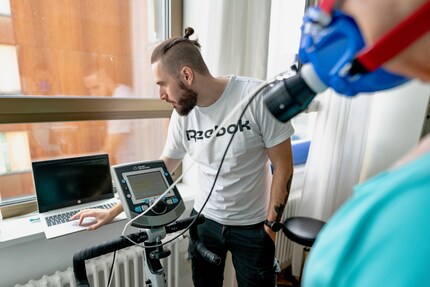
After all the analysis, I get a detailed but very flexible diet plan. I get an ingredient list that I can choose from freely for three main and two in-between meals along with pre- and post-workout snacks. I like that. It means I can peer into my fridge, consider what I’m in the mood for, and then prepare something appropriate. «Make sure to eat more nutrients in the first half of the day than the second,» Gregory advises. At this stage, he disapproves of my working out on an empty stomach, which I often do in the morning when I don’t have time to eat or just don’t feel like eating. «The goal is to keep the deficit as small as possible during training, especially during long sessions.» And this is where – fortunately – my beloved gummy bears come into play. They provide quickly available energy before and during training – in the morning, too – and I’m not only allowed to eat them, but am encouraged to do so. Score!
I’m very happy to have got advice tailored to my lifestyle that’s based on concrete data. A week has passed since the consultation, and I’ve largely followed the diet plan and recommendations. I’ve focused on regeneration, reducing my training. What I find somewhat difficult is eating as much as the diet plan says I should during the day. I’m not used to it. I have a tendency to skip meals or just eat some fruit instead of lunch and then properly feast at dinnertime. But sticking to the plan has proved worth it. I’m already seeing progress. My cravings for sweets have indeed just about disappeared. What amazed me the most is that my weight has already dropped by 1.5 kilogrammes – despite eating a lot more. To be clear, losing weight was not my goal. But getting rid of the water retained in my legs from insufficient recovery is definitely a boon for me, my health and my training.
Research diver, outdoor guide and SUP instructor – I love being in, on and around water. Lakes, rivers and the ocean are my playgrounds. For a change of perspective, I look at the world from above while trail running or flying drones.
Interesting facts about products, behind-the-scenes looks at manufacturers and deep-dives on interesting people.
Show all